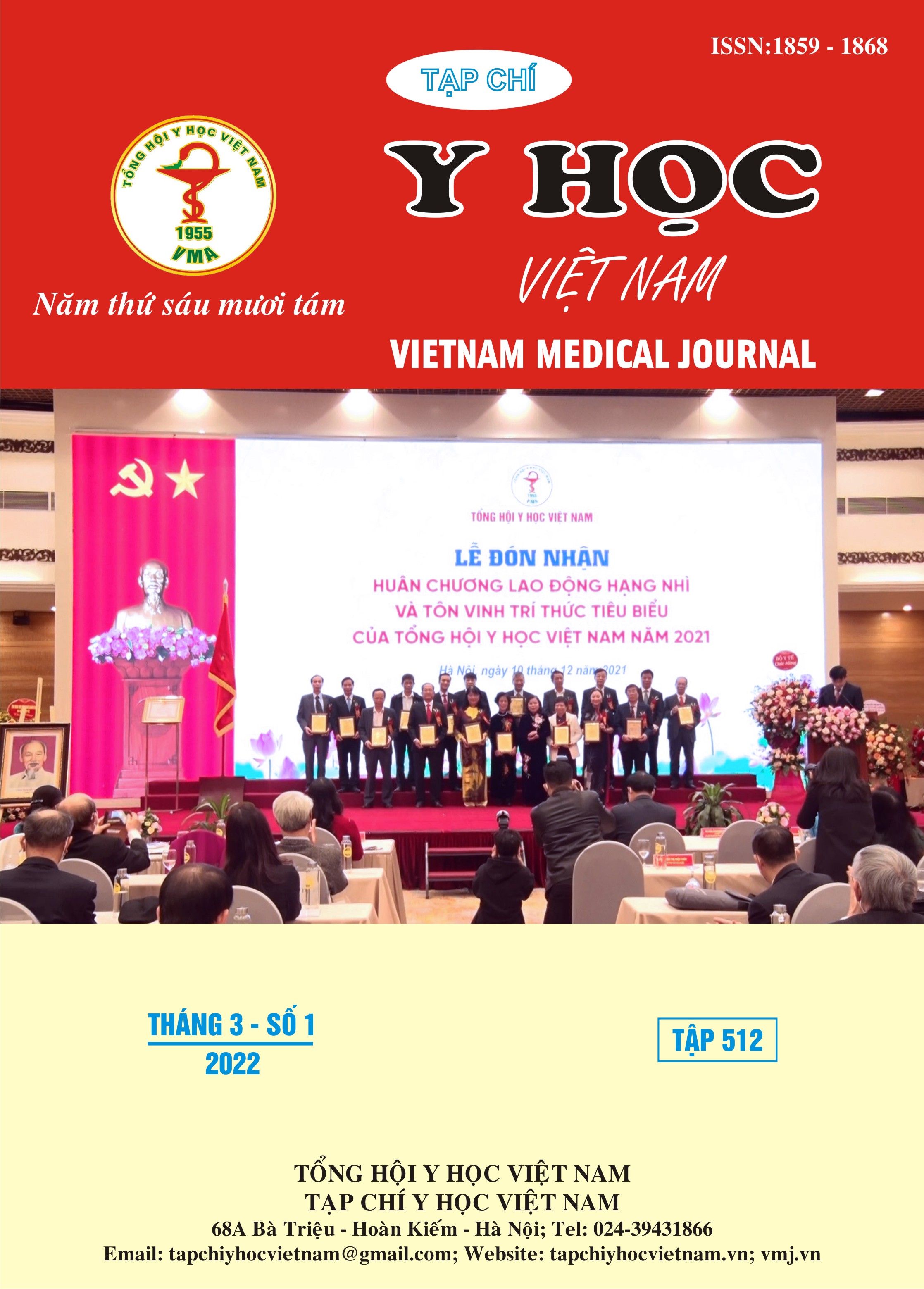EARLY RESULTS OF HYBRID SURGICAL TREATMENT OF STANFORD TYPE B AORTIC DISSECTION
Main Article Content
Abstract
Background: Stanford type B aortic dissection (TBAD) is a common vascular disease with an incidence of about 3/100,000 people/year, with a 5-year mortality rate of 30-40% if not treated appropriately. Treatment of TBAD includes medical and surgical treatment, in which hybrid surgery with debranching of aortic arch combined endovascular intervention and placement of a stentgraft is increasingly applied. It is widely used in cases where the proximal lower extremity is not suitable. Objective: To evaluate the early results of hybrid surgical treatment of Stanford type B aortic dissection. Material and Methods: A retrospective and case series study of patients who underwent surgery to treat aTBAD at Cho Ray hospital from January 2017 to December 2020. Results: 43 patients diagnosed with aTBAD were indicated for hybrid surgery with the average age of 54.8± 12.3, oldest patient is 75 years old, the youngest patient is 31 years old, 67.4% of patients is male. There were 15 cases of surgery for transposition of the LCCA - LSA, 28 cases of surgery for transposition of the RCCA – LCCA - LSA. Average operative time 304,5 ± 76,37 minutes, the postoperative hospital stay is 7.91±2.93 days. The technical success was achieved in 97.6%. Paraplegia developed in 1 patient (2,3%), 1 case of transpositional hematoma(2,3%), left recurrent laryngeal nerve injury developed in 1 case(2,3%), Thirty-day mortality was 2.3% (1 of 43) due to cerebral hemorrhage, severe pneumonia. Average follow-up time is 10.6 ± 1.8 months. Follow-up mortality rate 2,4%, endoleak type IB 2,4%, retrograde type A dissection 2,4%. Conclusions: Hybrid surgery for treatment of acute TBAD with inappropriate proximal landing zone has good results, complications and mortality rate are low. Long-term results: need further evaluation.
Article Details
Keywords
Stanford type B aortic dissection, hybrid surgery
References
2. Bavaria J. E., Brinkman W. T., Hughes G. C., Khoynezhad A., Szeto W. Y., Azizzadeh A., et al. (2015), "Outcomes of Thoracic Endovascular Aortic Repair in Acute Type B Aortic Dissection: Results From the Valiant United States Investigational Device Exemption Study", Ann Thorac Surg, 100 (3), 802-808; discussion 808-809.
3. Bünger C. M., Kische S., Liebold A., Leißner M., Glass A., Schareck W., et al. (2013), "Hybrid aortic arch repair for complicated type B aortic dissection", J Vasc Surg, 58 (6), 1490-1496.
4. Cambria R. P., Conrad M. F., Matsumoto A. H., Fillinger M., Pochettino A., Carvalho S., et al. (2015), "Multicenter clinical trial of the conformable stent graft for the treatment of acute, complicated type B dissection", J Vasc Surg, 62 (2), 271-278.
5. Investigators The VIRTUE Registry (2011), "The VIRTUE Registry of type B thoracic dissections--study design and early results", Eur J Vasc Endovasc Surg, 41 (2), 159-166.
6. Nienaber C. A., Kische S., Rousseau H., Eggebrecht H., Rehders T. C., Kundt G., et al. (2013), "Endovascular repair of type B aortic dissection: long-term results of the randomized investigation of stent grafts in aortic dissection trial", Circ Cardiovasc Interv, 6 (4), 407-416.
7. Cochennec Frédéric, Tresson Philippe, Cross Jane, Desgranges Pascal, Allaire Eric & Becquemin Jean-Pierre (2013), "Hybrid repair of aortic arch dissections", Journal of Vascular Surgery, 57 (6), 1560-1567.


